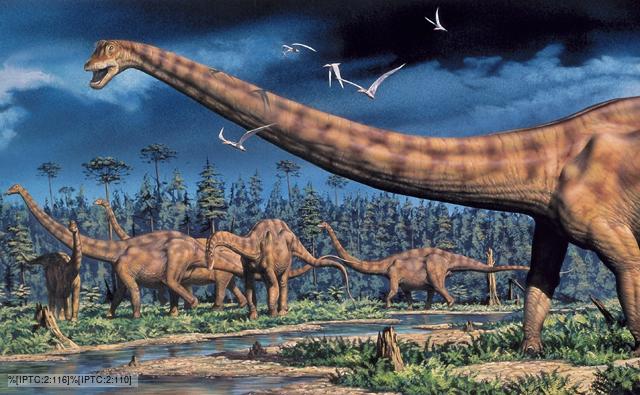


In order to do this, we'll look at their anatomy starting at the skull and finishing at the tail.
First the skulls. Compsognathus has a small but long and pointed skull with over 60 sharp, curved teeth. Diplodocus has a tiny head which is held at an angle. The jaws are weak with thin peg-like teeth. Allosaurus has huge jaws and a wide, hinged mouth with 70 dagger-like teeth. The massive, powerful head is held almost upright.
Next the necks. Compsognathus has a flexible neck that allows for quick movements. Diplodocus has a long, powerful neck. There is much dispute regarding sauropod necks. Were they held stiff and upright like a Giraffe's or were they flexible and low to the ground like a Swan's? Allosaurus had a thick, short and flexible neck that was built for power not agility.
Now the backbone. Compsognathus had pretty average vertebrae, nothing too exciting. Diplodocus' vertebrae were strengthened to prevent the massive body from collapsing under its own weight. Allosaurus had strong back muscles to support its body.
Next we journey to the forelimbs. In Compsognathus we see three clawed fingers, good for grasping prey (up until 2000 it was believed to only have two fingers). Diplodocus had five toes, the first being large and sharp and the others were padded like an elephant's (although this is disputed). Allosaurus has short, sturdy arms with three-fingered hands for grabbing and tearing.
Following that it is logical to look at the hindlimbs. Compsognathus had long, light-boned back legs for speed. Diplodocus had four pillar-like legs to support its weight. Allosaurus had three sharply clawed toes pointing forwards, a fourth toe pointing backwards to spread the weight and a reduced fifth toe.
Finally, we reach the tail. Compsognathus has a long tail, almost half the length of the body for balance. Diplodocus has a long, heavy tail to act as a counterbalance so it doesn't topple onto its face. This tail is also thin at the end and was probably used like a whip. Allosaurus' tail was long and muscular and was also used for balance.
And that's it. This was just meant to highlight the main body plans of dinosaurs. Part 2 (because no topic is ever finished) will look at another three body plans. Next week we will look more closely at perhaps the most important dinosaur fossil ever - OUM J13505.
See also:
More dinosaurs
More dinosaurian anatomy goodness
Skulls
No comments:
Post a Comment